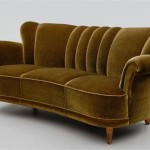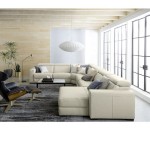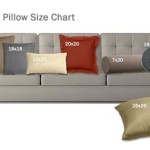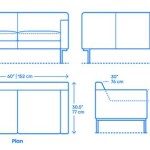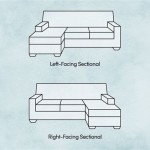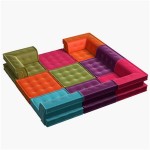How Much Fabric Do I Need For Sofa Slipcovers?
Creating custom slipcovers for a sofa can breathe new life into existing furniture and offer a cost-effective alternative to purchasing a new piece. A critical element of the project is accurately determining the amount of fabric required. Underestimating the fabric needs can lead to mismatched seams or incomplete coverage, while overestimating results in unnecessary expense and potential waste. The process requires careful measurement, consideration of fabric type, and an understanding of pattern matching, if applicable. This article aims to provide a comprehensive guide to estimating fabric needs for sofa slipcovers.
The primary factors influencing the amount of fabric required include the sofa's dimensions, the chosen fabric's width, the presence of patterns that require matching, and the complexity of the slipcover design itself. Sofas vary greatly in size and shape, from simple two-seater loveseats to sprawling sectionals. A larger sofa necessitates more fabric. Similarly, intricate designs with features like pleats, skirts, or separate cushion covers increase fabric consumption. Finally, the fabric's width directly impacts how efficiently the fabric can be used. Wider fabrics generally require less yardage for the same project compared to narrower fabrics.
Taking Accurate Sofa Measurements
The foundation of accurate fabric estimation lies in precise measurements of the sofa. It is crucial to utilize a flexible measuring tape and to record measurements in inches or centimeters, depending on your preferred unit of measure. Consistency in measurement units is essential to avoid errors in subsequent calculations. Consider using a helper to assist with the measuring process, particularly for larger sofas.
Begin by measuring the overall width of the sofa, from the outermost point of one arm to the outermost point of the other. This measurement will determine the width of the main body of the slipcover. Next, measure the height of the sofa from the floor to the highest point of the back. This measurement is crucial for determining the length of fabric needed for the back panel and any skirt or flounce.
Following the height measurement, determine the depth of the sofa, from the front edge of the seat to the back of the sofa. This measurement is essential for calculating the fabric requirements for the seat and back panels. Measure the arm height from the floor to the top of the armrest. Also, measure the arm width at its widest point. These measurements dictate the fabric needed for the arm covers.
For sofas with separate cushions, measure the length, width, and thickness of each cushion. Repeat these measurements for both seat and back cushions, making sure to differentiate between them if they are different sizes. Add seam allowances to all measurements. A typical seam allowance is ½ inch, but may vary based on sewing preference. Ensure that seam allowances are consistent across all measurements.
Consider any unique features of the sofa, such as curved arms, tufting, or unusual back shapes. These features require additional fabric to accommodate their contours. It is often helpful to sketch the sofa and annotate the measurements directly on the sketch. This visual aid can assist in visualizing the fabric layout and identifying any areas that may require extra consideration. Double-check all measurements to minimize errors. Inaccurate measurements can lead to significant discrepancies in fabric estimation.
Accounting for Fabric Width and Pattern Matching
Fabric width directly influences the efficiency of fabric usage. Fabrics are typically available in standard widths. Common widths include 45 inches, 54 inches, 60 inches, and 108 inches (often used for upholstery fabrics). Before calculating the fabric needs, determine the width of the chosen fabric. This information is usually provided on the fabric bolt or online product description.
Wider fabrics, such as 60-inch or 108-inch widths, allow for more efficient cutting and often require less overall yardage, particularly for wider sofas. Although narrower fabrics, such as 45-inch widths, may require more fabric, they can be more economical or necessary depending on fabric availability and price. Understanding the fabric width is critical for optimizing fabric layout and minimizing waste.
If the chosen fabric has a pattern, such as stripes, plaids, or floral designs, it is necessary to account for pattern matching. Pattern matching involves aligning the pattern across seams, ensuring a visually cohesive and professional-looking slipcover. Pattern matching significantly increases fabric consumption, as additional fabric is needed to align the pattern repeats. The size of the pattern repeat determines the amount of extra fabric required. A larger pattern repeat necessitates more fabric than a smaller pattern repeat.
To determine the pattern repeat, measure the distance between identical points in the pattern. For example, measure the distance between two identical flowers in a floral print. Add the pattern repeat measurement to the length of each piece that requires matching. For example, if the back panel requires 4 feet of fabric and the pattern repeat is 12 inches, add 12 inches to the 4 feet of fabric needed. When cutting patterned fabric, always cut a full repeat to ensure alignment. This will result in extra fabric waste but ensures pattern consistency.
When calculating the total fabric needed, consider the most efficient way to lay out the pattern pieces on the fabric. Minimize fabric waste by nesting smaller pieces within larger pieces. Consider the direction of the pattern when laying out pattern pieces. Some patterns have a directional orientation and must be cut in the same direction to maintain visual consistency. Factor this into fabric calculations.
Estimating Fabric Amounts for Different Sofa Components
To effectively estimate the total fabric required, it is beneficial to break down the sofa into its individual components and calculate the fabric needed for each. This methodical approach allows for a more accurate and comprehensive estimation. The primary components to consider include the main body panels (back, sides, and front), arm covers, cushion covers (both seat and back), and any additional features such as skirts or pleats.
For the main body panels, calculate the fabric needed for the back, sides, and front individually. For the back panel, multiply the width of the sofa by the height of the sofa. Add seam allowances to both dimensions. For the side panels, multiply the height of the sofa by the depth of the sofa. Add seam allowances. For the front panel, measure the width of the sofa across the front and multiply it by the desired height of the front panel. Add seam allowances.
For arm covers, measure the height of the arms from the floor to the top of the armrest, the width of the arm at its widest point, and the depth of the arm from front to back. Calculate the fabric needed for each arm cover separately. For sofas with curved arms, take additional measurements to account for the curvature. Add extra fabric for easing around the curves. For cushion covers, measure the length, width, and thickness of each cushion, both seat and back. Calculate the fabric needed for each cushion cover individually. Add seam allowances and allowance for zipper or closure.
For skirts or flounces, measure the perimeter of the sofa where the skirt will be attached. Multiply this measurement by the desired length of the skirt. Add extra fabric for pleats or gathers. The amount of additional fabric needed for pleats or gathers depends on the desired fullness of the skirt. For pleats, multiply the perimeter by two or three, depending on the depth and spacing of the pleats. For gathers, multiply the perimeter by 1.5 to 2, depending on the desired fullness.
After calculating the fabric needed for each component, add up the individual amounts to determine the total fabric required. Add an additional 10% to 15% to account for errors, adjustments, or unforeseen circumstances. This buffer provides a cushion for any potential issues during the cutting and sewing process. Finally, it is always advisable to consult with a fabric professional or experienced seamstress to review the measurements and fabric estimations. Their expertise can provide valuable insights and help ensure accuracy.

How To Make A Couch Slipcover Part 1

How To Make A Slipcover In 5 Steps Guide With Melly Sews

How To Make A Slipcover In 5 Steps Guide With Melly Sews

A Velvet Slipcover For Our Sofa Fehrtrade

Which Fabric Is Best For Sofa Covers Hokipo Har Ghar Ka Humsafar

Herringbone Chenille Fabric Waterproof Antifouling Sofa Covers Funnyfuzzy

How To Make A Diy Slipcover Summer Living Room Decor

Loose Sofa Covers Coverforsofa

Pet Friendly Couch Cover Protect Your Sofa In Style Funnyfuzzy

How To Make A Sectional Slipcover Confessions Of Serial Do It Yourselfer


